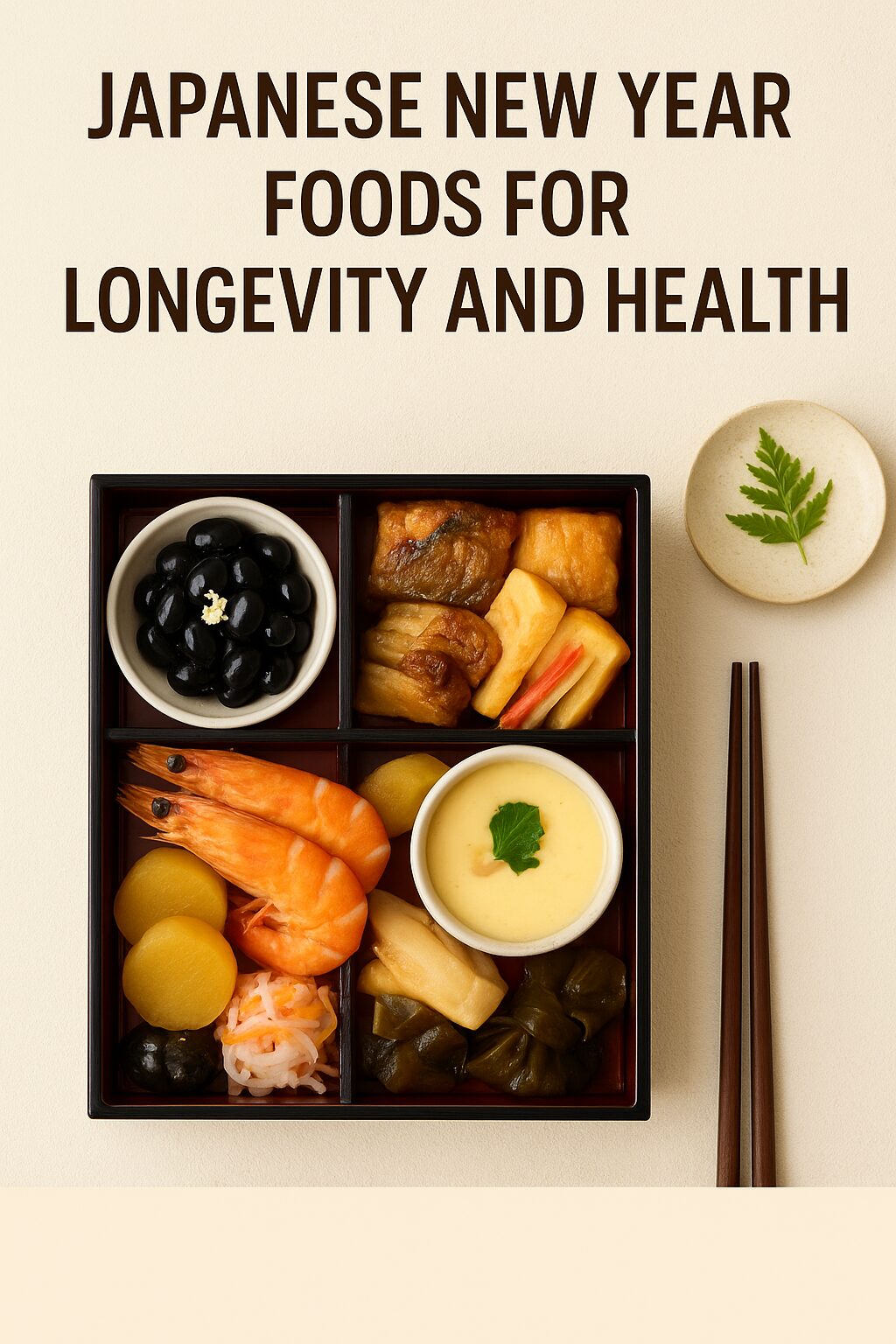The Japanese New Year, or Oshogatsu, is more than just a holiday—it’s a celebration of renewal, gratitude, and health. At the center of this tradition is osechi ryori, a beautifully arranged set of dishes served in lacquered boxes, each symbolizing good fortune, vitality, and longevity for the year ahead.
While these foods are deeply tied to Japanese culture, their health-focused ingredients and mindful preparation offer wonderful lessons anyone can enjoy—especially for those seeking a healthy start to the year.
The Meaning Behind Osechi Ryori
Osechi ryori originated more than a thousand years ago as a way to welcome the New Year gods (Toshigami-sama) and wish for family well-being. Traditionally, each dish carries a symbolic meaning related to prosperity, good health, or happiness.
Here are some of the most common osechi dishes and what they represent:
-
Kuromame (Black Soybeans) – Symbolizes hard work and good health. Rich in antioxidants and plant-based protein, they support heart and metabolic health.
-
Kazunoko (Herring Roe) – Represents fertility and the prosperity of future generations. It’s a great source of omega-3 fatty acids.
-
Kombu (Seaweed Rolls) – Comes from the word “yorokobu,” meaning “joy.” Seaweed is also mineral-rich and helps maintain hormonal balance.
-
Tazukuri (Candied Sardines) – Means “making rice fields,” symbolizing a good harvest. Sardines are high in calcium and vitamin D for bone health.
Each ingredient reflects a wish for well-being—showing how deeply food and health are linked in Japanese tradition.
Learn more about osechi’s history and cultural meaning.
The Hidden Health Wisdom in Japanese New Year Foods
Beyond symbolism, osechi meals are nutritionally balanced. They’re designed to provide energy, stability, and inner warmth during the coldest season.
Most dishes are lightly seasoned with natural ingredients such as soy sauce, mirin, and dashi, rather than heavy oils or creams. This keeps the food nutrient-dense but gentle on digestion—a great example of the Japanese philosophy of balance and moderation.
Plant-Based Proteins and Fermented Flavors
Many osechi ingredients, such as tofu, beans, and miso, provide plant-based proteins that support muscle and hormone health. Fermented elements like miso or vinegar pickles improve gut health, which is essential for nutrient absorption and immunity.
How to Enjoy Osechi-Inspired Meals in North America
You don’t have to prepare a full osechi set to experience its health benefits. You can easily bring Japanese New Year flavors into your kitchen or dining routine with these ideas:
1. Simplify with Readily Available Ingredients
-
Replace kuromame with regular black beans simmered in a touch of soy sauce and honey.
-
Try a simple kombu dashi soup with mushrooms for warmth and umami.
-
Add boiled shrimp for protein and symbolic longevity.
2. Dine Out Mindfully
Many Japanese restaurants in North America offer traditional dishes like chawanmushi (steamed egg custard) or grilled fish with miso glaze, which echo osechi’s light and nutrient-rich balance.
3. Apply the Philosophy to Western Meals
Think of your own holiday table: reduce heavy sauces, balance colors and textures, and use whole foods.
Even in a Western-style meal, this mindful approach brings both flavor and harmony.
Explore simple Japanese recipes adapted for American kitchens.
A Note on Inner Balance and Hormone Support
While foods play a big part in feeling vibrant, many women over 50 also experience energy dips or skin dryness during winter due to hormonal changes. In Japan, these natural shifts are often supported through fermented soy isoflavones—active plant compounds that help the body restore its own hormonal rhythm.
Juveriente Effisoy® delivers aglycone isoflavones from fermented soybean germ extract (AglyMax®), a Japanese innovation that supports natural hormone balance.
This helps ease fatigue, improve mood, and maintain vitality, allowing you to greet the new year with both inner and outer wellness.
Celebrate Renewal the Japanese Way
The Japanese New Year is about more than festivities—it’s about cleansing, gratitude, and starting fresh with intention.
By learning from osechi ryori and Japanese dietary habits, you can bring health, balance, and beauty to your own celebrations, wherever you are.







